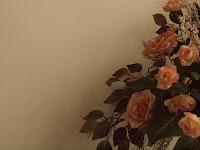Exercise A.
 Goal Keeper:
Goal Keeper:
WB = Auto. (5150k)
The Astroturf looks over rich whereas the
background green is desaturated.
WB = Daylight (5500k)
WB = Cloudy (6500k).
WB = Shade (7500k)
There is not a marked difference in these four images. A close inspection will reveal a slight difference in
the Astroturf colour, and what is even less obvious, slight variations in the orange and magenta.
The backgrounds in the Cloudy and Shade versions are too warm. I prefer the Daylight version as being the best interpretation of the background.
Shop Front:
WB = Auto.
WB = Daylight.
WB = Cloudy.
WB = Shade.
Of these four image the I prefer the Auto version. The 'background' colour provides a greater contast with the clothing colours.
Cocktails for Three:
WB = Auto.
WB = Daylight.
WB = Cloudy.
WB = Shade.
This shot was taken early evening. It would be difficult for the casual observer to decide which is the most acceptable. Skin tones would be misleading - these bods have out walking in the sun and wind all day.
I would prefer Auto or Daylight, there is little difference between the two of them.
Alpach Church:
WB = Auto:
WB = Daylight.
WB = Cloudy.
WB = Shade.
Of these, the decision is between the Auto and the Daylight versions. The Auto version wins - the whites are crisper and the colours of the conifers and tarmac are more accurate.
Exercise B.
Office Block and Embankment.
WB = Auto (7450k)
WB = Daylight (5500k).
WB = Tungsten (2850k).
Slight differences in the sky and artificial lighting can be noted between the Auto and Daylight settings.
The most dramatic difference is between the Tungsten and the other two. The use of Tungsten WB has produced an accurate translation of the artificial lighting but a cold distortion of the sky and external colour.
General Comments:
The images that are most likely to cause controversy when the White Balance is changed,at least in the range used in Excercise A, are those of a natural variety. These are which the observer has a preconceived idea of what is the 'correct' colour. Those such as the 'Shop Front' which are artificial will be given a greater range of acceptability by the observer.
Where both types of lighting exist in the same image as in Exercise B,should not a happy compromise be found, it would be preferable to change the artificial light rather than the natural.
Suggested viewing.
(Assignment 2.)

 Cartier Bresson
Cartier Bresson.
World renowned photographer. Pioneered the art of street photography. Always ready to capture the briefest opportunity of an image. Subjects range from Paris street life to Muslim women praying in Srinagar. Founder member of Magnum.
 Exercise 1. Own Workflow 1.
Exercise 1. Own Workflow 1.




























































